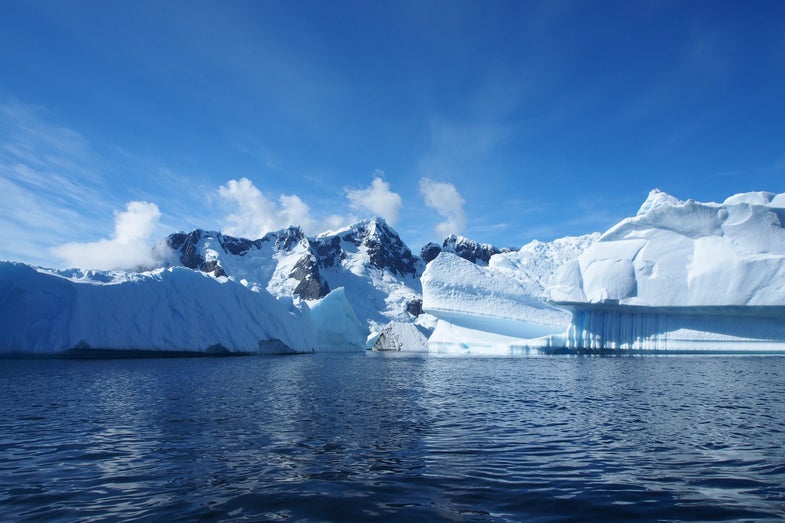Gravity Data Confirms: Antarctica Is Melting Faster Than Ever Before
A massive melting problem

Study after study shows that Antarctica isn’t in great shape. Its ice shelves are disappearing and its ice sheets are collapsing, hastening swiftly rising sea levels. Sounds terrible.
But just in case you wanted a second opinion, a new study out of Princeton University takes a look at a decade’s worth of satellite data. Their results, published in Earth and Planetary Science Letters, show that not only is Antarctica melting, it’s melting faster than ever before. Unlike other studies that looked at the volume of ice lost, this study used data relating to the mass of the ice–the difference the researchers say between measuring weight loss by looking in a mirror versus using a scale. While looking in a mirror (or the volume of ice) can give you some idea of what’s going on, it’s sometimes deceptive. Snow compacting into ice leads to a reduction in volume, but only ice melting into water or breaking off the continent registers as a change in mass.
They used data collected between 2003 and 2014 by NASA’s Gravity Recovery and Climate Experiment (GRACE) twin satellites that can measure differences in the amount of water around the world. Since its launch in 2002, GRACE has analyzed the health of underground aquifers, analyzed flooding, and helped show that ice loss in Antarctica was messing with the continent’s gravity.
In flybys over Antarctica, the satellites were able to weigh the mass of Antarctica’s ice cover. GRACE measures gravity by orbiting in formation around the earth. One satellite follows the other at a set distance, but when they pass over an area of greater gravity (an area with more mass), the lead satellite gets pulled away from its companion. By comparing gravity anomalies over time, GRACE can see where water is moving around the world. The data showed that between 2003 and 2014, Antarctica lost 92 billion tons of ice per year. That’s the net amount of ice loss–some ice grew back in East Antarctica, but the gains were a drop in the bucket compared to the 121 billon tons of ice that the West Antarctic ice shelf lost during that time.
“The fact that West Antarctic ice-melt is still accelerating is a big deal because it’s increasing its contribution to sea-level rise,” Harig said in a press release. “It really has potential to be a runaway problem. It has come to the point that if we continue losing mass in those areas, the loss can generate a self-reinforcing feedback whereby we will be losing more and more ice, ultimately raising sea levels by tens of feet.”